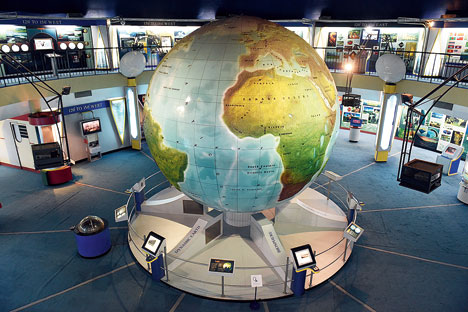
Last month I decided to check out Science City and, overall, my experience was as informative as it was enjoyable. Why Science City? Allow me to describe why this educational service is so important.

Although I did not study science after school, my curiosity and willingness to learn has always been strong. The history of mankind, the advancement of civilisations, emerging technologies, study of physics, just some of the exhibits displayed here, are invaluable subjects that every person should be taught, or have the desire to be taught. Science City does this in an interactive, well-formatted, and fun way for all ages. Of course, the beauty of teaching science is, regardless of how it’s taught, it will always be interesting. My particular areas of interest are astronomy, ancient civilisations (one would hope so as a history graduate) and anthropology, as all are associated with a degree of mystery and debate. It’s also fascinating to follow the journey as to why we are who we are because of points in evolution.

Science City believes in “enhancing science literacy and awareness among the citizens, triggering a change and development in the community”. With this idea of progress, the organisation strives to meet the fluid scientific developments with up-to-date research and exhibits. Even the site has seen significant progress since its conception in July 1997. I found the blend of buildings designed for research, lectures and seminars mixed with recreational public spaces and exhibits very important, as it means people of all ages and educational backgrounds could come together to learn in some way. This proves Science City is all about community.

Science City, a first of its kind in India and attracting never-ending queues of guests per year, was developed by the National Council of Science Museums (NCSM), an autonomous body under the ministry of culture, government of India. The NCSM is also the parent body to several other science centres in India, funded through government channels, although attractions of this city are entirely self-funded by ticket sales, making it impressively frugal and autonomous.

Hands-on and minds-on
Arriving in sweltering 37-degree Celsius heat, I first noticed how green and widespread the grounds were as sections boasted innovative water installations. As pleasant as they were, I was relieved to be briefed about the place in an air-conditioned room.
The most lasting impression I will take from my experience was the excellent hospitality, which deserves to be mentioned first. I was lucky enough to be briefed from the director, Subhabrata Chaudhuri, who, like all other staff there, was very welcoming. He explained to me a brief history of the city along with its missions and brochures of exhibitions. After the very informative chat, I went on a guided visit of the complex.
Another reason why Science City is so special is the sheer variety of displays on show. The scientific scope of information in each quarter is enough to send your brain into overload, yet everything is described in a very clear way. I managed to visit the Science Exploration Hall (provides an overview, from the formation of solar system to the latest in science and technology), Earth Exploration Hall (displays the details of the northern and southern hemispheres), Space Odyssey (exhibits on space science), Dynamotion (here there are several interactive exhibits on physical science), and Maritime Centre (depicts segments of maritime history), yet this list is not exhaustive as there is much more to see. At each stage, the attractions were presented in a very interactive and engaging way, most requiring ‘hands-on’ or ‘minds-on’ features like kiosks and physical games.
The ‘A Dark Ride’ exhibition showcased 56 robotic animal models split into seven sections, each explaining the origins of aquatic and land-based life forms right through the dinosaur (Mesozoic) period to the ice age. This can be contrasted to the digital simulation and visual learning experience at the ‘Science on a Sphere’ educational talk. The state-of-the-art facility’s suspended globe illustrates the Earth’s dynamic processes with live visuals from satellites showing the land mass, ocean currents, temperature zones, clouds, and snow cover, all used as an educational tool by the speaker, who, though spoke in Hindi, seemed very knowledgeable and assertive.
Video displays were also used in the digital panoramic presentation of human evolution in a giant auditorium. This impressive 12-minute video spanned a large cylindrical room with mannequins of pre-historic human species, animals and plants in the foreground. Here, I learnt that human evolution began approximately six-seven million years ago, comprising four hominid groups. I also found out the first simple life forms, Prokaryotes, were formed around 3.6 billion years ago.
After visiting the Science Exploration Hall, it seemed fitting to read about earth’s civilisations in the present day, along with its structure, atmosphere, tectonic activity, biodiversity, and risks of climate change. The information from all regions of the world was determined by the degree of orbit you were standing next to a globe centrepiece of the room, and latitude was divided into north and south hemispheres on a ground- and first-floor basis; again, this was clever, engaging, and child friendly.
Overall, the experience was great and the service was a credit to the whole purpose of the project — to make the community aware of scientific knowledge in a stimulating environment.
Joe Raggett (A University of Southampton graduate who has interned with t2)
Pictures: B. Halder










